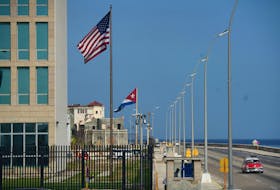It is 102 years since the last major pandemic caused by a virus spread across Prince Edward Island. However, there are many similarities between the features of this present pandemic and the pandemic of Spanish flu of 1918 although separated by over a century in occurrence.
The following outlines some of the major similarities between the two pandemics:
1) Both pandemics were caused by a newly introduced virus with major adverse effects on the human lungs. With the 1918 pandemic, the virus was not identified until decades after 1918 when specimens from frozen Arctic tundra revealed the virus. For COVID-19, modern diagnostic techniques identified the virus before significant spread had taken place.
2) On Oct. 12, 1918 the Charlottetown Board of Health closed all schools, churches and theatres as did jurisdictions soon after across the province. Presently public gatherings across the province have been closed in response to COVID-19 with “social distancing” being recommended. In 1918 restricted public gatherings on P.E.I. began nine days after the first death in the province due to Spanish flu occurred. Restrictions on gatherings were recommended earlier in the course of this pandemic on P.E.I.
3) On Oct. 12, 1918 the Provincial Health Office provided “sanitary regulations” which included the following: A) Isolate patients for five days, B) Quarantine contacts for five days, C) Prohibit unnecessary gatherings, and D) Wash hands promptly after rendering service to a patient.
The incubation period (time between exposure and onset of symptoms of illness) of the Spanish flu was probably one to four days while that of COVID-19 virus is up to 14 days. However, there are similarities between the regulations issued in 1918 and those recommended now in spite of the differing incubation periods.
4) On Oct. 22, 1918 screening for symptoms of illness was started in New Brunswick for those planning to take the ferry boat bound for P.E.I. A similar process is now in effect for those crossing the Confederation Bridge.
5) In 1918 and presently there was a lack of a vaccine or effective drug (antiviral agent) readily available to prevent or combat the virus. Now many laboratories around the world are searching for an effective vaccine or medication to fight the COVID-19 virus as they did in 1918.
6) There were concerns regarding the depressing effect on the economy in 1918 because farmers were not coming to town for purchases because of fear of getting the virus. Now there are very notable concerns related to our depressed economy. In 1918 there were no federal programs issued to assist the economy while presently there is considerable interest in providing financial help to those adversely affected by the slowing in the economy.
One can only imagine the sacrifices of the health care workers in 1918 who cared for those with the Spanish flu. Protective equipment in hospitals was probably less available than it is today and one of the major means of spread in 1918 was admission of an ill patient with spread to hospital staff and then to the community where the hospital staff person lived.
There were differences between the two pandemics including the presence of the First World War which ended during the Spanish flu outbreak on P.E.I. The other major difference lies in the age range of severe illness which was in the 20 to 40 age range in 1918 while those over 70 years appear to be most affected by the COVID-19 virus.
In spite of the differences between the two outbreaks, it is the similarities between the two events separated by over 100 years which stand out. For the most part, history is unfortunately repeating itself. All we can do is get through this crisis together with the heroic assistance of health care and essential services workers.
Lamont Sweet is a former chief public health officer for P.E.I. He lives in Stratford.

![Operating room at the old Charlottetown Hospital [pre-1920]. Contributed photo/Public Archives and Records Office, Acc2320/32-12](https://saltwire.imgix.net/opinion-the-covid-19-pandemic-is-history-repeating-itself-1.jpg?cs=srgb&fit=crop&h=568&w=847&dpr=1&auto=compress%2Cenhance%2Cformat)







